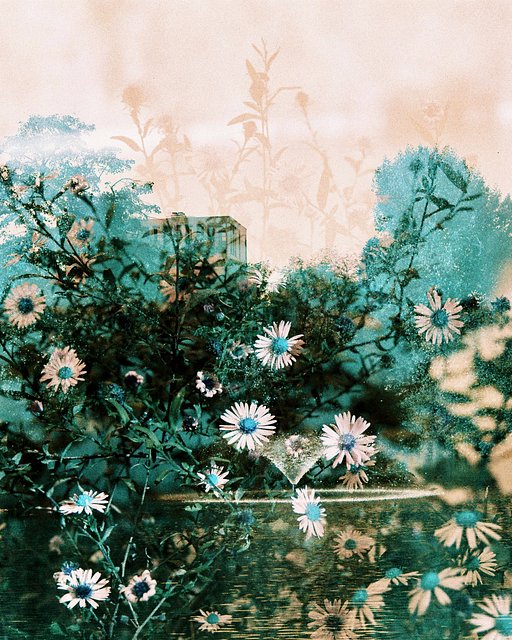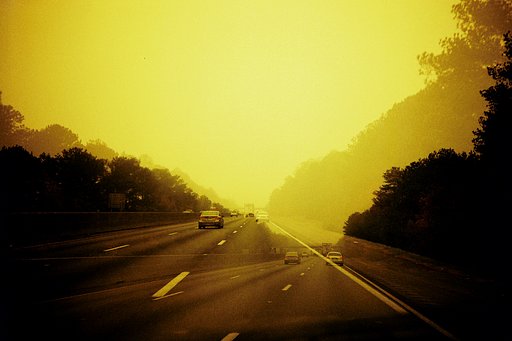Cameras in Depth: Handling a Medium Format Camera
7 27 Share TweetThis article is dedicated about the ergonomics of medium format film cameras. I'm a proud owner of a series of Lomo medium format cameras, from the simple toy cameras (Diana and Holga) to the fully automatic Lomo LC-A 120. Handling and composing with a medium format camera is a very different process respect to the use of a small format ones. So, except for the simple and intuitive (but very limited) Holga and Diana cameras, I want to explain the ergonomics, the framing process, and the time/aperture adjustment of the more complete ones, starting with the timeless Russian Lubitel cameras. I have three different models of these cameras: the Lubitel 2, the 166 Universal and the new 166+, all represented in the photos below:
Of minimalist engineering (there is not even the light meter), they are extremely reliable (thanks to their simple design and the absence of electronics parts) and they work in a completely mechanical way. The three models are quite similar, although the Lubitel 166+ presents some important advantages, so this one is my preferred in terms of handling compared to the other two. The 166+ makes it possible to focus with a split-image aid, which greatly facilitates the distance setting even in poor light conditions; Also the times and diaphragms scales are painted with greatest fonts, so they are easier to read respect to those presents in the previous models.
On all Lubitel models the shutter is armed independently respect to the film advance mechanism: so to prevent accidental double exposures I suggest you advance the film just after taking a photo. The film frame number appears on a red window placed on the back of the camera where there is the possibility to select the right window to match the chosen format, simply adding an internal mask (with the exception of the Lubitel 2 model that allows only the 6x6 format).
Note that the absence of a pentaprism implies that the displayed image is reflected horizontally, so an object displayed on the right side in the viewfinder is situated on the left side of the real image. This limitation compromises, at least for the first times, to take images "on the fly"; although it should be noted that many photographers of the '30s and '40s used this kind of cameras without any difficulty; you just need some time to adapt to this unusual display mode.
However, it should be noted that the selection of time and aperture, made by means of two levers placed near the lower lens, is not as immediate as in most small format cameras; so a good idea is to make a "preselection" of the values according to the lighting conditions and then act only with small adjustments just before shooting (for example, on a summer day, with 100 ISO film, you can preselect a shutter time of 1/125s and an opening F11, adjusting it "on the fly" if necessary with small movements of the diaphragm lever. In the same way on a cloudy day, you can preset the diaphragm at full aperture with the same shutter speed. Always remember that an overexposure, even one or two stops, is always better than an underexposure for a negative film).
Thanks to their almost noiseless central shutter, these cameras are also great to capture some candid moments in the streets, sometimes even without being too much noticed, since the use of these cameras involves lowering your gaze to see into the top viewfinder and since the position of the shutter lever is very close to those of the of shutter speed and aperture diaphragm; you can shoot simulating an adjustment.
Here a series of photos taken with my Lubitel 2:
This other series was taken with my 166 Universal:
And here a series taken with my new 166+:
The Lomo LC-A 120 is a medium format camera conceived in a completely different way from the previous ones, better suited to take a photo on the fly and to shoot without thinking about the technical aspect (shutter speed, aperture, and precise focusing). You can use it with the same simplicity as an LC-A or an LC-Wide, using only two basic commands: zone focus and film advancement. Equipped with a super-wide-angle lens, it is more similar to an LC-Wide than to the LC-A, and thanks to the large depth of field of this lens the zonal focusing is always sufficient to get sharp pictures. The camera also allows multiple exposures by acting on a small lever placed next to the advance wheel (which if not activated avoids unintentional double exposures). The LC-A 120 mechanics are designed so that, as in the 35mm models, the film advance wheel automatically locks once the frame has been advanced (you do not need to check the progress through a window, a very useful technical preciousness if you are using the camera in low light). The film loading process is rather simple: unlock the used roll and the empty spool acting on two levers placed in the inside of the back, extract them, insert the new one, and advancing it until the start line (usually indicated by a pair of vertical arrows) is located at the center of the frame, and then close the back. At this point it is sufficient to act on the advance wheel until it locks; this happens automatically when the film is in the first frame. At the end of the 12 shots, the advance wheel is free to rotate without blocking, allowing you to wind the entire roll. The extreme lightness of the camera allows you to keep it around your neck all day without getting tired, and the square viewfinder, very bright and free of unnecessary information (there are only two red LEDs that perform the same functions as those found in the 35mm models) allows you to compose the image without distractions.
Here a series of photos I took with this camera:
If you want a camera with the interchangeable lens I recommend the Lomo Belair, with its attractive design, lightweight and compact. This is a folding camera that, despite the size of the medium-format film, once closed can be conveniently stored in a pocket or purse. Equipped with two lenses (a normal focal and a wide-angle) quickly interchangeable thanks to a convenient bayonet mount, it works with a pair of small batteries that powered the exposure meter coupled to the central shutter (the camera works in aperture priority mode).
On the upper part of the camera, there is a small recess where you can insert the viewfinder suitable for the focal length chosen. The ISO adjustment is made acting on a small wheel placed immediately behind the front of the camera. Focusing is done by acting on a ring coaxial with the lens (where the distances of 1, 1.5, 3 meters and infinity are shown to allow you to preset a "zone" value); coaxially to the focus ring you find also the aperture setting (two positions: F8 for cloudy days and F16 for sunny ones)
If you are looking for a simple and intuitive camera to use, able to create beautiful panoramic formats on the 120 format, and you do not need a precise focusing or don't need to work with rather open diaphragms, this camera is very suitable for your purpose. Remember, even with this camera, to advance the film immediately after shooting to avoid unwanted double exposure, and check the progress of the frame on the window on the back. Ergonomically, it is a "middle way" between the completely manual TRLs and the Lomo LC-A 120, which is completely automatic in the choice of both shutter time and aperture.
Here a series of photos I took with my Belair camera:
The last medium format camera in this article is the legendary Kodak Brownie, which deserves to be mentioned (I have the model "No. 2", one of the most popular). This camera belongs to the history of photography contributing, at the beginning of the twentieth century, to the spread of this beautiful hobby. Completely mechanical, equipped with a rotating shutter (similar to those of the Holga and Diana models), with a selection of 3 aperture values and with a single shutter speed (approximately 1/50 of a second), it is very easy to use. The shutter lever works either by pushing it down or pulling it upwards (avoiding double movement to avoid double exposure: there isn't a return spring like in Diana or Holga) and the film is advanced through a simple little wheel on the right side of the camera. Equipped with a discrete doublet lens in optical glass, it was the workhorse and the first camera of many guys. Because of its simplicity of use, Kodak had coined, for the first time, on the occasion of the baptism of this series of cameras, the slogan: "You press the button, we do the rest", anticipating one of the rules of Lomography! In the last photo (and at the top in the first one) you can see the model I have, while the remaining images refer to more recent versions of the same camera.
The main limit of this camera is the difficulty of composing the images, displayed on two extremely small windows (one for vertical and one for horizontal shots - the camera use the 6x9 cm format) placed on the right side and on the top of the body. So it remains a nice collector's item, with which I have had fun taking some pictures:
Cameras-in-Depth is a series dedicated to a comparison between film cameras, illustrating some hidden details to help you to choose the right camera for you! The previous articles were about Plain Glass Viewfinders, SLR Viewfinders, Handling a Pocket Camera, a Rangefinder Camera and an SLR Camera.
written by sirio174 on 2017-12-18 #gear #medium-format #lubitel #gear #kodak-brownie #regular-contributor #lc-a-120 #cameras-in-depth #handling













































6 Comments